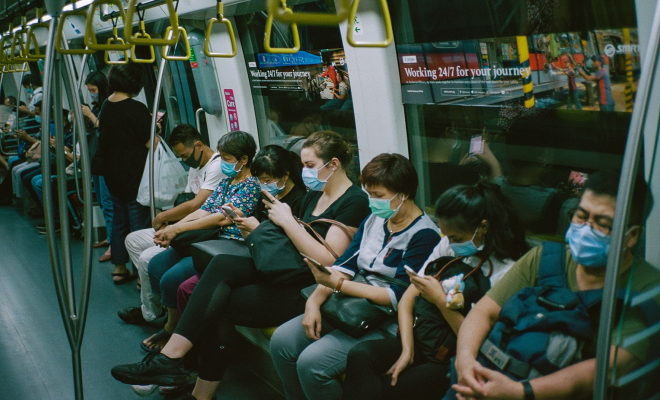
Health x Wellness
COVID-19 tips, information and Q&As from the Mayo Clinic
We compile a series of tips, information and Q&As shared by the Mayo Clinic regarding COVID-19.
Information about a vaccine
The development of vaccines can take years. This is especially true when the vaccines involve new technologies that haven’t been tested for safety or adapted to allow for mass production. Why does it take so long?
- First, a vaccine is tested in animals to see if it works and if it’s safe. This testing must follow strict lab guidelines and generally takes three to six months. The manufacturing of vaccines also must follow quality and safety practices.
- Next comes testing in humans. Small phase I clinical trials evaluate the safety of the vaccine in humans. During phase II, the formulation and doses of the vaccine are established to prove the vaccine’s effectiveness. Finally, during phase III, the safety and efficacy of a vaccine need to be demonstrated in a larger group of people.
- Because of the seriousness of the COVID-19 pandemic, vaccine regulators might fast-track some of these steps. But it’s unlikely that a COVID-19 vaccine will become available sooner than six months after clinical trials start. Realistically, a vaccine will take 12 to 18 months or longer to develop and test in human clinical trials. And we don’t know yet whether an effective vaccine is possible for this virus.
- If a vaccine is approved, it will take time to produce, distribute and administer to the global population. Because people have no immunity to the COVID-19 virus, it’s likely that two vaccinations will be needed, three to four weeks apart. People would likely start to achieve immunity to the COVID-19 virus one to two weeks after the second vaccination.
Information about unusual COVID-19 symptoms
COVID-19 can cause a wide range of signs and symptoms. The most common are fever, dry cough and tiredness. Other symptoms include shortness of breath or difficulty breathing, muscle aches, chills, sore throat, headache, or chest pain.
However, COVID-19 can also cause symptoms you might not expect, including:
- Gastrointestinal symptoms. COVID-19 might cause mild gastrointestinal symptoms, including a loss of appetite, nausea, vomiting and diarrhoea. These symptoms might only last one day. Some people with COVID-19 have diarrhoea and nausea prior to developing fever and respiratory symptoms.
- Loss of smell or taste. COVID-19 might cause a new loss of smell or taste — without nasal congestion. This typically lasts nine to 14 days. Some research suggests that loss of smell or taste might be an early predictor of COVID-19.
- Skin changes. Younger people with less severe COVID-19 might develop painful, itchy lesions on their hands and feet. Sometimes called COVID toes, this symptom typically lasts about 12 days. Others might develop hives or a rash with flat and raised lesions.
- Confusion. COVID-19 also has been reported to cause confusion in older people, especially those with severe infections.
- Eye problems. COVID-19 might cause eye problems such as enlarged, red blood vessels, swollen eyelids, excessive watering and increased discharge. The infection also might cause light sensitivity and irritation. These symptoms are more common in people with severe infections.
Signs and symptoms of COVID-19 may appear two to 14 days after exposure to the virus and can range from mild to severe. If you think you might be experiencing symptoms of COVID-19, call your doctor.
Tips about taking private and public transport during the pandemic
Remember to practice good hand hygiene before using any and all modes of transportation:
- Before you leave, wash your hands with soap and water for at least 20 seconds or use hand sanitizer with at least 60% alcohol.
- Once you reach your destination, wash your hands again with soap and water for at least 20 seconds or use hand sanitizer with at least 60% alcohol as soon as possible upon arrival.
- Avoid touching your eyes, nose, and mouth with unwashed hands.
- Cover your coughs and sneezes with a tissue or use the inside of your elbow. Throw used tissues in the trash and wash your hands immediately with soap and water for at least 20 seconds or use hand sanitizer with at least 60% alcohol.
Common Q&As about taking transportation
What are some COVID-19 safety tips when engaging ride-hailing services?
“It’s is fine to travel in air-conditioned car. There’s no known data that air conditioning can contribute to causing infection. Avoid offering or sharing snacks or other items. Each passenger should handle their own bags and belongings. Limit close contact inside the vehicle, when possible and physically distance from each other when outside the vehicle. If using your own car or vehicle, clean and disinfect high-touch surfaces such as door handles, arm rests, steering wheel and seat belts.”
Dr. Abinash Virk, a Mayo Clinic infectious diseases physician
What about public transportation, such as trains and buses?
When taking public transportation, people should wear masks and avoid touching their face with their hands. It is well-known that people can terminate or contaminate their masks with their hands. Therefore, hand hygiene needs to be maintained. Use hand sanitizer with at least 60% alcohol and then wash your hands with soap and water when you arrive at your destination. Consider traveling during non-peak hours when there are likely to be fewer people, enter and exit buses through rear entry doors if possible and use touch-free payment methods when available.
Dr. Abinash Virk, a Mayo Clinic infectious diseases physician
Article content compiled information provided by the Mayo Clinic.
Photo by Shawn Ang on Unsplash









